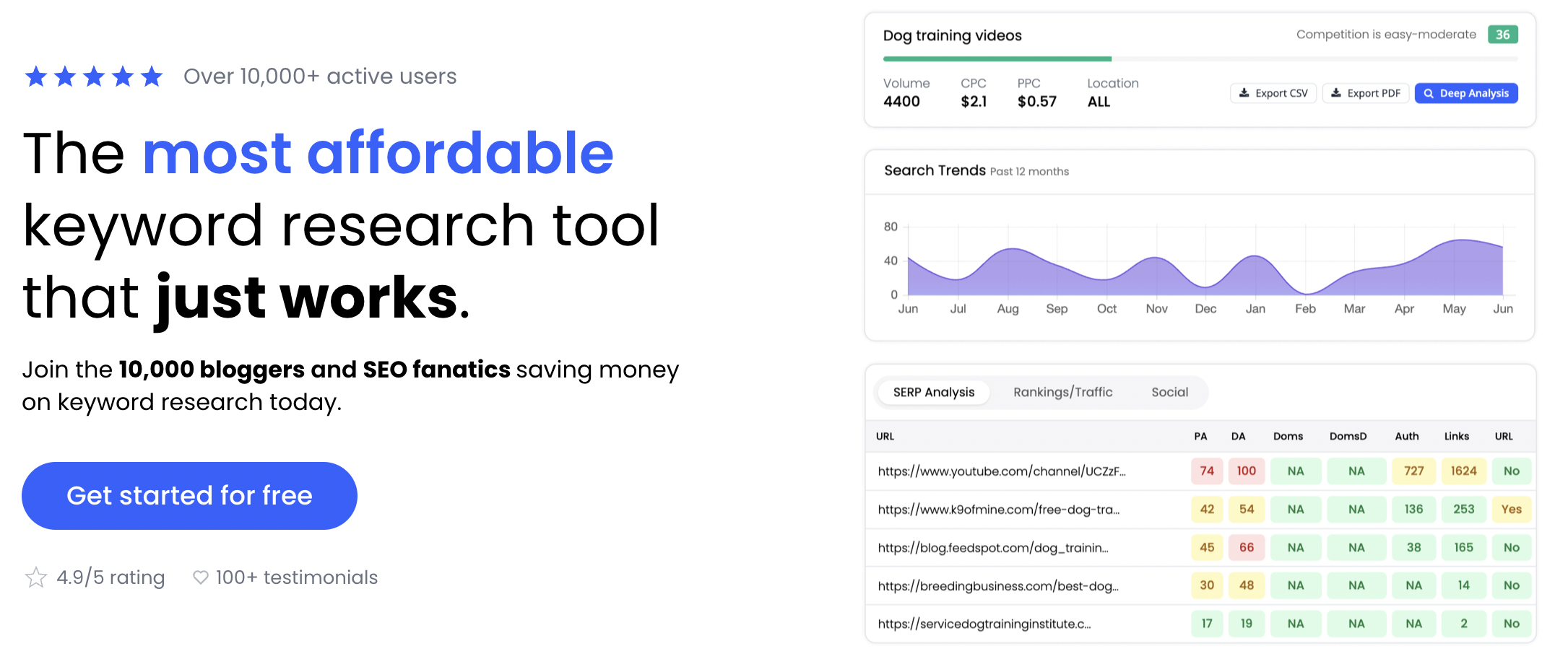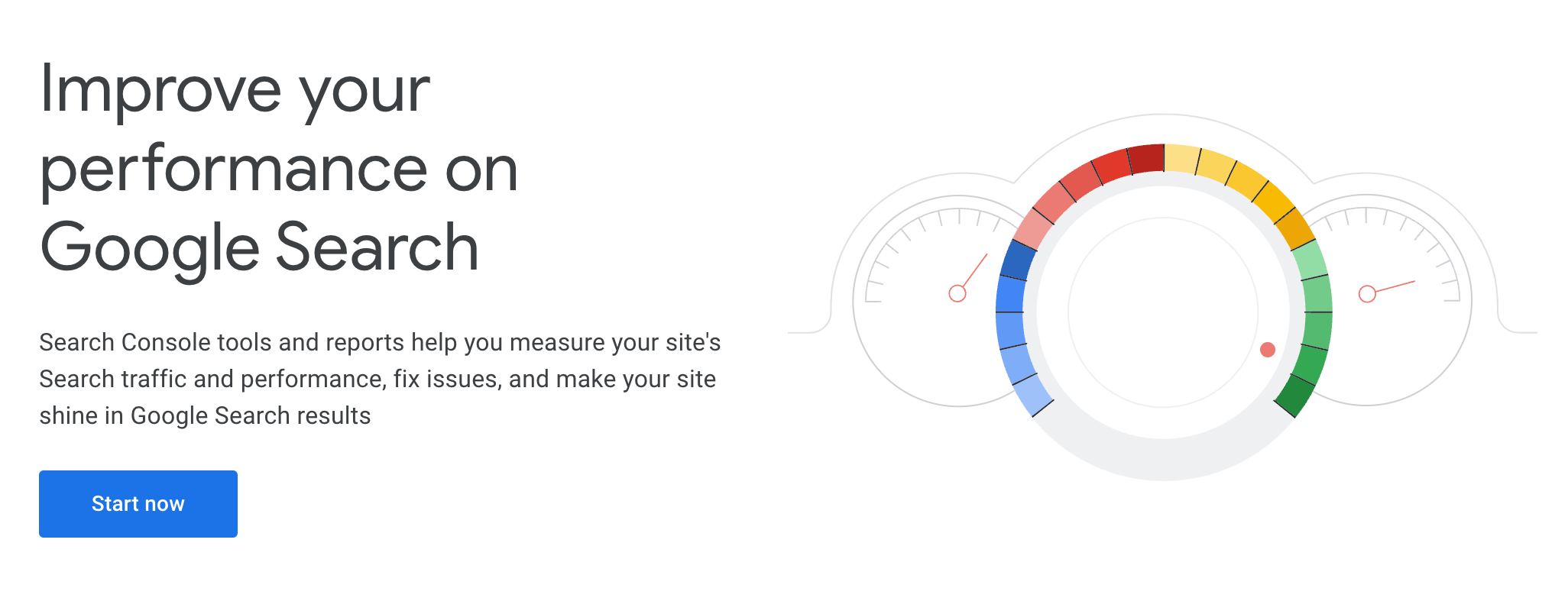SEO-Friendly Website Tips, Helpful Resources, and FAQs
As an SEO (search engine optimization) writer and consultant, I understand how confusing it can be to show up on Google and drive traffic to your website. In this article, I’ll discuss tried-and-true tips for how to create an SEO-friendly website.
More than 53% of website traffic comes from organic search, and 68% of online experiences start with a search engine, so having an SEO-ready website is essential.
Below, we’ll explore how to optimize for SEO. I’ll also share helpful resources and examples, ideal for beginners and anyone who needs a refresher.
What is an SEO-friendly website?
An SEO-friendly website is optimized for search engines like Google to understand what your site is about and who it helps (your target audience). With SEO optimization, you give Google more information about your website, which helps you rank on the search engine results pages (SERPs) and drive traffic to your site.
SEO isn’t all about Google, though. Audience-focused, helpful content that provides a good user experience is key.
How to create an SEO-friendly website
You can use on-page and off-page SEO techniques to optimize your website. On-page relates to what actions you take on your site, while off-page takes place away from your site (e.g., backlinks).
Below, we’ll explore on-page strategies you can use to create an SEO-ready website.
Pin & save for later
Keywords
Keywords are terms people search Google for, and they’re arguably the most important aspect of SEO-friendly content. If your site doesn’t use the phrases your target market is searching for, it’s nearly impossible to reach them.
Think of your ideal client or customer and what phrases they might search for. For most companies, there are many possible keyword phrases. For example, I offer SEO services so my audience might search for “hire a copywriter,” “how to write a blog,” or “marketing without social media.” I have articles on all these topics, so people who search for these phrases can find me on Google.
Here are some helpful tips for using keywords:
Target one main keyword per web page
Incorporate a couple of secondary keywords to increase traffic opportunities per page
Use your main keyword several times on the designated page, about 1-2% of the content
Include your secondary words one to a few times if it makes sense to
Avoid overstuffing keywords, and use them naturally to avoid appearing spammy to Google and your website visitors
Use a keyword research tool like Keysearch to find high-traffic, low-competition keywords (Keysearch is my go-to tool, and you try it free for seven days)
Keysearch helps you find keywords your audience is searching Google for (+ other content writing tools)
Headings
Headings, also known as h1s, h2s, and h3s, help you organize your content so it’s easy to read and skim. They also help Google understand what your content is about, so it’s helpful to include your keywords in at least a few headings on each web page.
You’ll see the headings on this article as the larger words that divide the content into sections. The h1 heading is the title, so you should have only one. The others break down your content, and you should have at least one heading for every 300 words or less.
Headings make your content reader-friendly. Because many readers skim, headers can give a good idea of the main aspects of the content.
Image alt text
Not only does alt text help your visually impaired website visitors understand your images, but it also gives Google more information about your site.
When writing alt text:
Describe the image in less than 125 letters
Be straightforward and avoid using too many punctuations that screen readers have trouble with
Include your keyword only if it makes sense to
Reduced image size
Large image file sizes cause slow website speed, which can lead to a loss in conversions. Almost 70% of consumers say page speed affects their decision to buy.
Before adding any images, screenshots, graphics, etc., to your website, you need to reduce the file size. My favorite tool for this is TinyPNG because it’s free and easy to use.
To use TinyPNG, simply upload your image and then download the reduced file size. Before you add the smaller file to your site, you can rename the file as your primary keyword to help with SEO. I discuss this more–and other optimization strategies–in my SEO Blogging Course.
TinyPNG is an easy and free resource for reducing image files sizes
Helpful content
While an SEO-friendly website helps Google understand your site and target market, its automated ranking systems are designed to share helpful content that benefits readers before search engines.
While you should share helpful content on any web page, blogs are the most effective way to do this if you want to drive more website traffic and share value with your audience.
According to Google, the following pointers can help you create helpful, reliable content:
Provide original content - You can do this with useful information based on personal experience, research, and relevant examples.
Thoroughly cover the topic - Meet user intent by asking yourself, “What information do I need to share to fully answer the search query?”
Avoid rewriting other content - Don’t look at top-ranking content and reword it. Instead, draw on what’s ranking, add additional value, and write a well-produced and easy-to-read article.
Create an appropriate title - Don’t over-exaggerate your title. Instead, make it compelling by being descriptive about the content.
Write trustworthy content - Include sources and insight from subject matter experts, linking back to their author or About page. I use Qwoted to find experts.
Keep your reader in mind - Write for a specific audience, ideally your website’s target market. When the reader finishes reading your article, they should feel satisfied having fully learned about the topic.
Avoid search-engine-first content - Many people believe SEO means writing to a specific word count, including your keyword as much as possible, and producing tons of content. Instead, focus on writing SEO-friendly content that’s high-quality and people-first.
Your audience > search engines
Internal links
Internal links direct people to other pages on your website. For example, in this article, I’ve linked to related articles. You might also use internal links on various landing pages to direct people to your contact pages, specific product pages, etc.
Using internal links helps you keep people on your site longer. It also tells Google you have relevant information on your website, which boosts your potential for showing up in organic search results.
When using internal links:
Avoid using too many links, which can distract your readers. I typically include five to ten links per blog article and three to four links on other web pages (e.g., services pages, homepage, about page, etc.).
Include relevant links only. Don’t overstuff links for the sake of linking.
Link to descriptive anchor text (the words adding a link to). Anchor text should inform the reader what information they’ll find when they click. Avoid linking text like “click here” or “sign me up.”
Set links to open in a new tab. Allowing readers to open links in a new tab lets them keep the original page open, too.
URL tag
Your URL tag is the extra information at the end of a link – pollycloverwrites.com/blog/this-is-the-url-tag. Every page on your website needs a distinct URL tag that tells your website visitors what the page is about.
Use these guidelines for creating URL tags:
2-5 words, all lowercase letters
Separate each word by hyphens
Less than 60 characters
Include your primary keyword
Tell the reader what the content of the page is
Meta title
A meta title shows up on the SERPs and tells users what the page is about before they click it. This creates the first impression, so your meta title must be descriptive and compelling.
Here are tips for creating your meta title:
No more or less than 50-60 characters
Use your primary keyword at the beginning
Incorporate a # if it makes sense to - readers find numbers appealing because they show organization
Include parentheses or a colon to offer further clarification
The meta title for this blog article is SEO-Friendly Website Tips, Helpful Resources, and FAQs.
Note: I did update this article for better SEO, so the URL tag doesn’t entirely match the new keyword and title. I never recommend changing your tag after publishing, as this can affect linking. If I were to create a URL tag for the new keyword and title, it would be “seo-friendly-website-tips".”
Meta description
A meta description or tag is just below your meta title on SERPs and gives more insight into the content. It’s a 1-2 sentence summary that tells your target audience what the webpage content covers. Again, this is where you can create a first impression and attract readers.
Although Google sometimes auto-generates a meta description based on the contents of the page, you should still create your own following these tips:
~150 characters telling the reader what the content covers
Incorporate your primary keyword
Engage the reader by speaking directly to them
Here’s what the URL, meta title, and meta description look like on the SERPs for one of my blog articles on blog vs. Instagram for marketing:
Your URL tag, meta title, and description show up on the SERPs and make the first impression
Track analytics
To ensure your SEO-friendly content is doing its job to help you meet your website goals, you need to track analytics. Your results can also guide your SEO strategy as you create future content.
Most website platforms share analytics, which gives you insight into all your traffic, including search engines, social media, etc. I also recommend using Google Search Console, which shows results from organic search traffic only. Google Search Console is free and quick to link your site to.
Google Search Console tracks your website’s SEO performance and shares analytics to help you understand:
What people are searching for when they land on your site
Which pages are performing well or not
What issues your website may be experiencing
While many people suggest using Google Analytics to track performance, I find Google Search Console more user-friendly and informative.
Google Search Console shows analytics for organic website traffic
SEO-friendly website: FAQs
To help you fully understand how to create an SEO-ready website, I’ll answer common questions below.
What is SEO in the simplest terms?
SEO is creating content that’s helpful for your audience while also giving Google information about your website (e.g., who it helps and how). By using SEO strategies, you increase your chances of ranking on Google and boosting your organic website traffic.
What website is good for SEO?
Most, if not all, website builders are good for SEO. I’ve worked with many platforms, including WordPress, Wix, Squarespace, and Shopify – all of which can be optimized for search engines.
My favorite SEO-friendly website builder is Squarespace because it’s easy to use and customize, has various SEO features, and is affordable. Squarespace is also all-in-one, offering web hosting, email marketing, e-commerce, etc., so it works well for all business owners and bloggers.
How can I make my website good for SEO?
The most effective way to create a website that’s good for SEO is to identify your target market, what kind of content they’re looking for, and how you can help them. Use a keyword research tool to find high-traffic keywords relevant to your ideal audience and write helpful content on those topics. While you can optimize all web pages for SEO, a blog is the best way to offer value to your website visitors while optimizing your site for search engines.
Why is SEO good for business?
SEO increases traffic to your website, allowing you to reach more people, build trust with your audience, and increase conversions.
Because 75% of people never go past the first page of Google, you need to use search engine optimization strategies to rank high and reach your ideal clients or customers.
As more people find your website, you increase brand awareness and opportunities to meet your business goals.
Does SEO work for small business?
SEO is an excellent technique for small businesses because it helps your target audience find you. Almost 30% of small businesses don't have a website, so optimizing yours for search engines is an effective way to stand out.
Can I do SEO on my own?
Once you understand the basics of creating an SEO-friendly website, you can do SEO on your own. You also need a willingness and the time to learn, implement, and maintain SEO.
If you’d like help with your website SEO, contact me to learn more about my DIY, done-with-you, and done-for-you support.
SEO-friendly website: Conclusion
I hope you found this article helpful and feel confident creating and maintaining an SEO-ready website. Although SEO takes time to learn, the more you practice it, the easier it becomes.
To win SEO, focus on creating content that’s helpful for your target audience, then optimize for search engines.
Check out my blogging course to learn how to write SEO-friendly blog articles to increase your website traffic, grow your audience, and generate strong leads.








